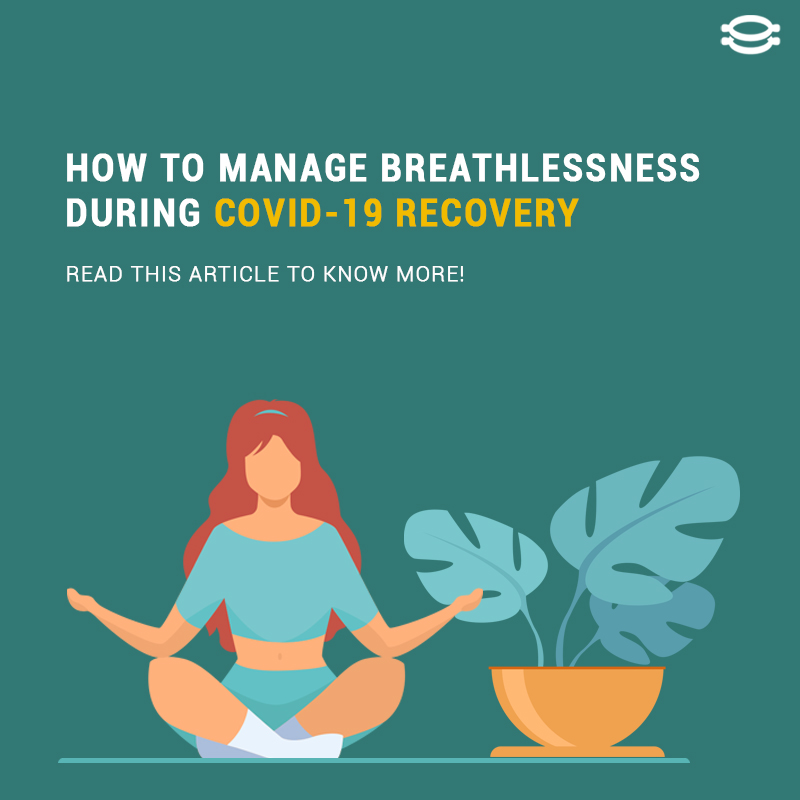Breathing Techniques and Positioning to manage breathlessness during COVID-19 recovery
As we face the surge of cases in the second wave of COVID-19, breathlessness and low oxygen saturation are the most common symptoms affecting the lung capacity of the individual. The second strain, Indian Variant (B.1.617) is not restricted only to the older population or younger children but is affecting many middle-aged populations as well. The rate of hospitalization is increasing day by day due to this deadly virus spreading rapidly. The World Health Organization has published Support for rehabilitation and self-management for COVID-19 related illness. These rehabilitative exercises can manage breathlessness and can improve the oxygen levels during recovery from COVID-19. This blog will cover these self-management techniques which will be useful to overcome the above-mentioned symptoms.
Breathing techniques play an essential role in the COVID-19 recovery process. The exercises can be started at home during self-isolation and easily incorporated into your daily routine.
Benefits of breathing exercises-
- Deep breathing helps to restore the diaphragm function and increase lung capacity.
- Deep breathing exercises also reduce anxiety and stress which in turn improves your sleep quality, which is common in an individual who experiences severe symptoms or was admitted to a hospital.
Breathing techniques to ease breathlessness
- Deep Breathing While On Your Back- Lie on your back and bend your knees so that the bottom of your feet are resting on the bed.
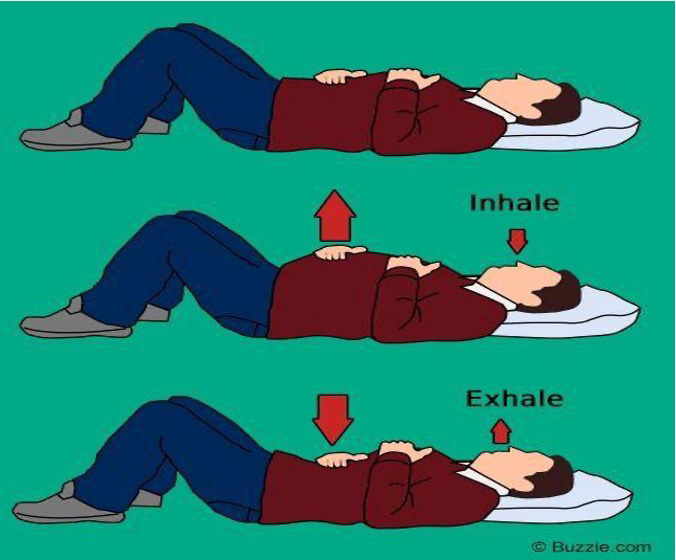
Inhale through your nose and exhale through your mouth - Controlled breathing- Sit in a comfortable and supported position. Try to use as little effort as possible and make your breaths slow, relaxed, and smooth
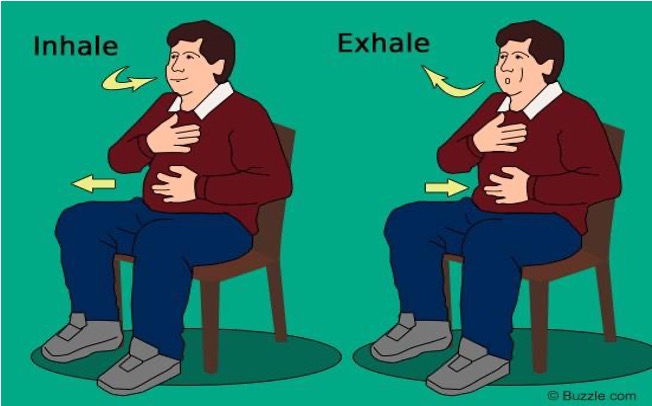
Slowly breathe in through your nose and then slowly breath out through your mouth. As you breathe in, you will feel the hand on your stomach rise more than the hand on your chest - Breathing exercise with shoulder mobility- This exercise incorporates motion with deep breathing, which helps increase coordination and build strength in the arms and shoulders. It also opens up the muscles in your chest to give the diaphragm space to expand.
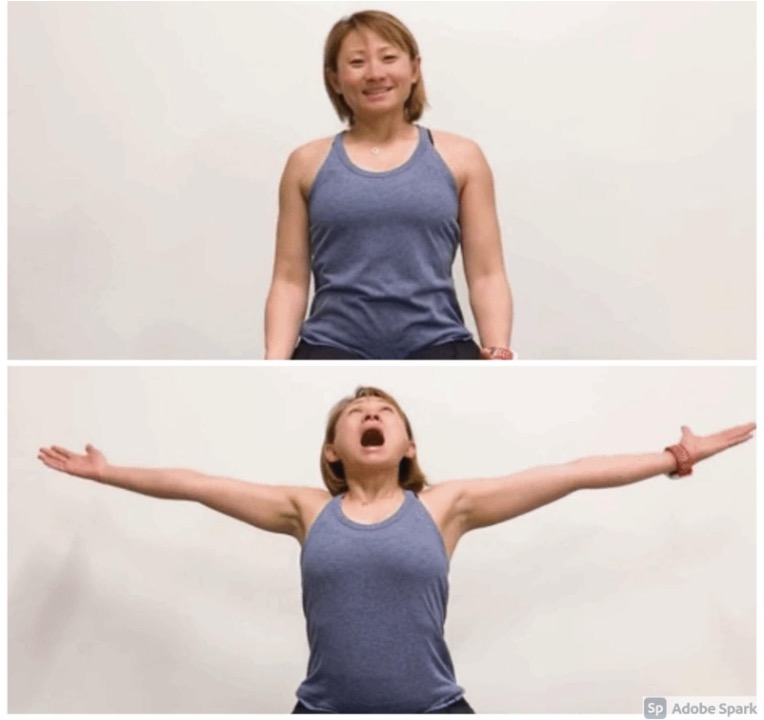
Sit upright on the edge of your bed or in a sturdy chair. Reach arms overhead and create a big stretching yawn. Bring your arms down and finish by smiling for three seconds. - Paced breathing- This is useful to practice when carrying out activities that might take more effort or make you breathless, like climbing the stairs or doing household work. It is important to remember that there is no need to rush.
-
- Think about breaking the activity down into smaller parts to make it easier to carry out without getting so tired or breathless at the end
- Breathe in before you make the ‘effort’ of the activity, such as before you climb up a step
- Breathe out while making the effort, such as climbing up a step
- You may find it helpful to breathe in through your nose and out through your mouth
Positions to ease breathlessness-
Your breathlessness should improve as you slowly increase your activities and exercise, but in the meantime, the positions and techniques below can also help to manage it.
“If you start to feel severely short of breath and it does not get better with these positions or techniques, contact your doctor immediately”
-
- High Side Lying
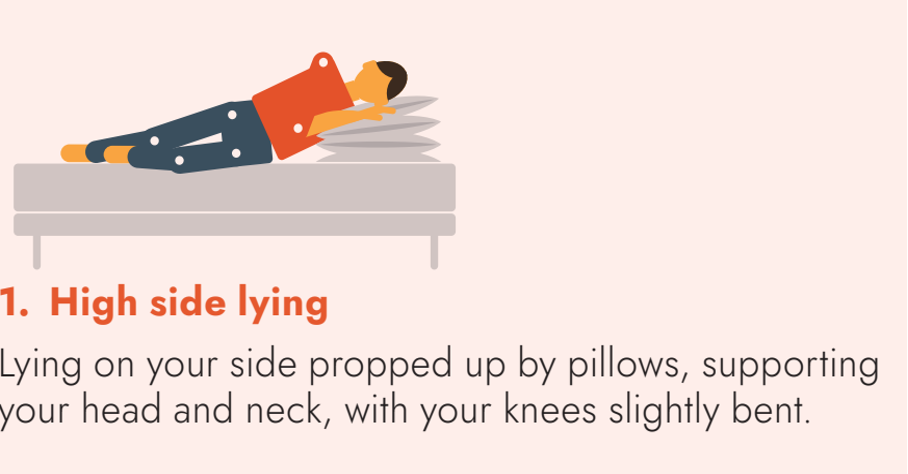
- Forward Lean Sitting
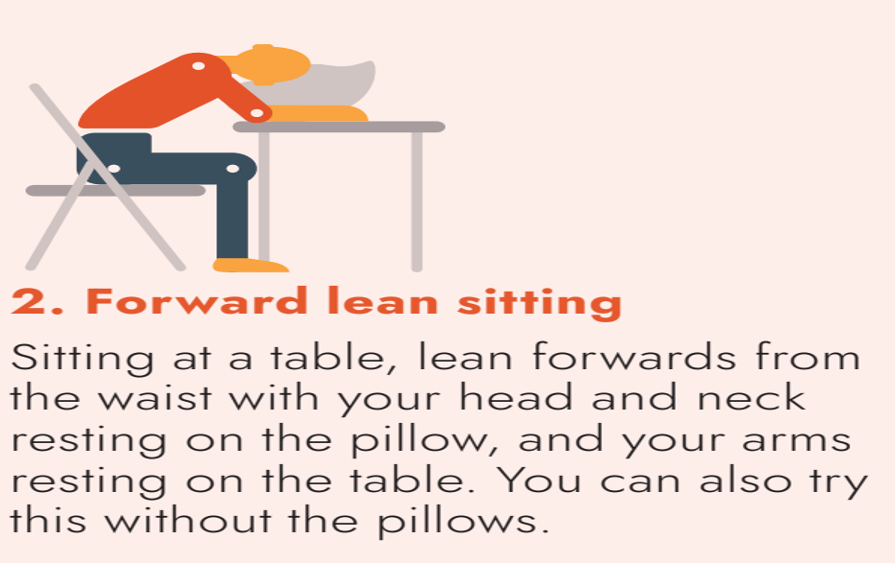
- Forward Lean Sitting with no table in front
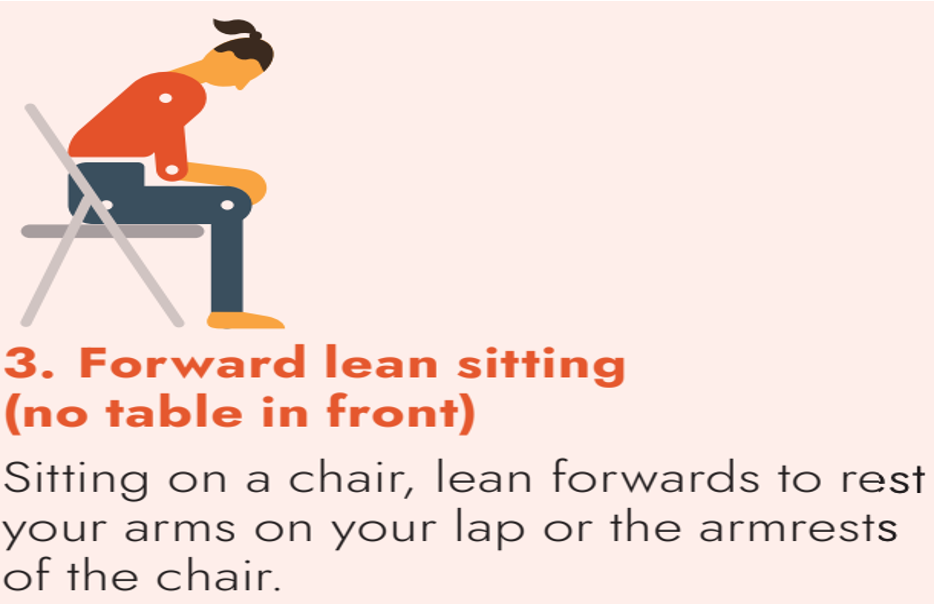
- Forward Lean Standing
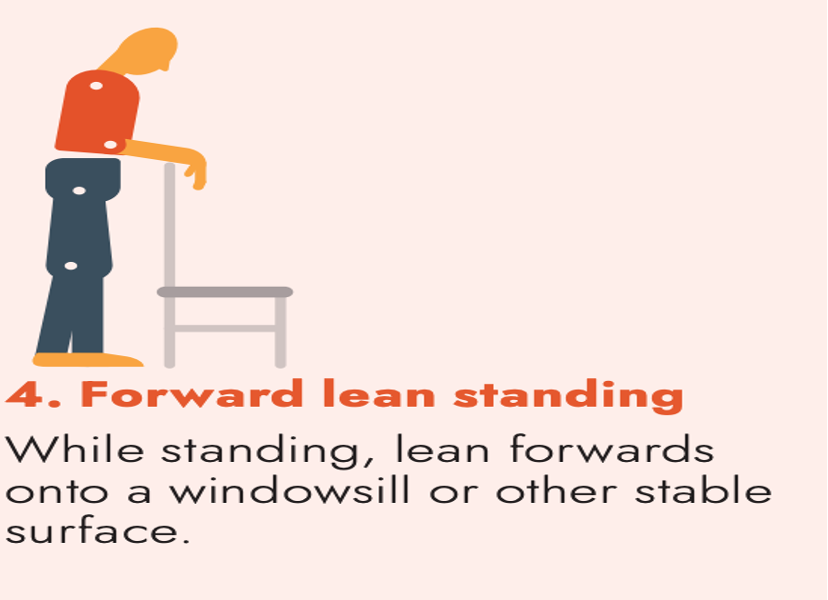
- Standing with back support
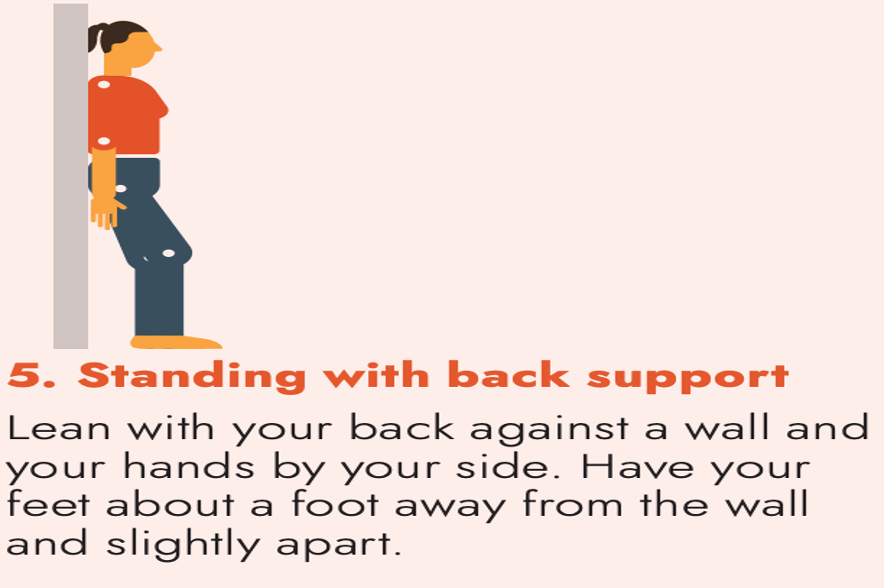
- High Side Lying
Precautionary measures while doing Exercises
Do not begin exercises, and contact your doctor, if:
- You have a fever
- You have any shortness of breath or difficulty in breathing while resting
- You have any chest pain or palpitations
STOP exercising immediately if you develop any of the following symptoms:
- Dizziness
- Shortness of breath more than normal
- Chest pain
- Excessive fatigue
- Irregular heartbeat
- Any symptoms you consider an emergency
Stay Home, Stay Safe and Contact Healthcare Professional if Oxygen Saturation drops below 92%.
Dr. Priyanka Iyer
Sr. Physiotherapist I Atlas Chiropractic & Wellness I Whitefield

